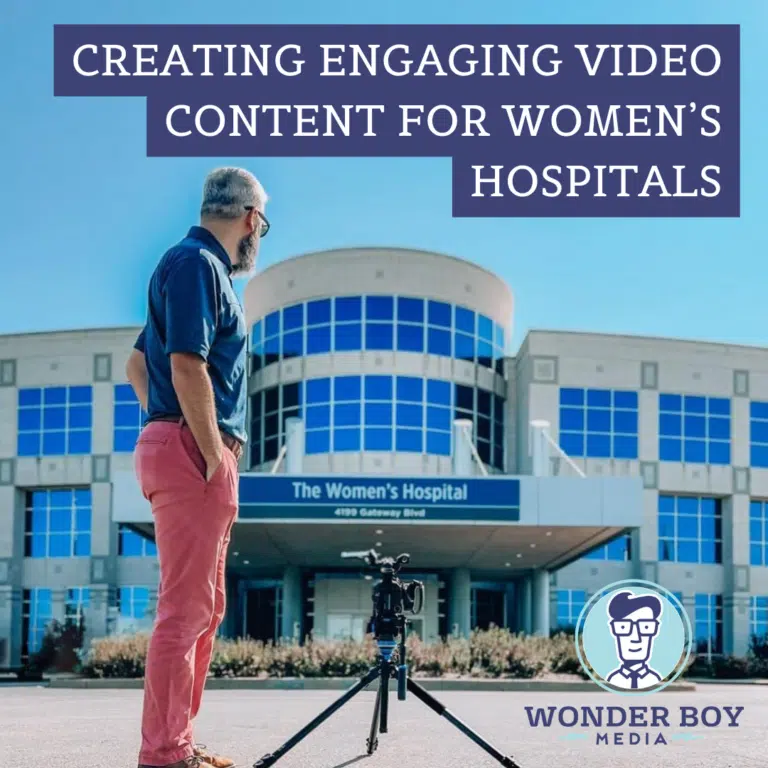In the realm of healthcare, women’s hospitals play a vital role in providing specialized care and support to women of all ages and backgrounds. As an expert in video production within the healthcare sector, we understand the importance of creating engaging and informative video content to connect with patients, promote services, and foster a sense of community within women’s hospitals. In this comprehensive guide, we’ll explore the strategies, best practices, and real-world examples of creating compelling video content specifically tailored to women’s hospitals.
Understanding the Audience:
Before diving into the specifics of video production, it’s crucial to understand the unique needs, preferences, and concerns of the target audience: women. Women’s hospitals cater to a diverse range of patients, including expectant mothers, new mothers, women seeking gynecological care, and those undergoing specialized treatments for conditions such as breast cancer or reproductive health issues. By understanding the demographics, psychographics, and healthcare needs of these women, we can tailor our video content to resonate with their interests and priorities.
Types of Video Content for Women’s Hospitals:
1. Patient Testimonials: Real-life stories from patients who have received care at the women’s hospital can provide valuable insights and reassurance to prospective patients. These testimonials can cover various aspects of the patient experience, including prenatal care, childbirth, surgical procedures, and postpartum recovery.
2. Physician Profiles: Introducing viewers to the physicians, nurses, and healthcare professionals who work at the women’s hospital humanizes the healthcare experience and builds trust with patients. Physician profiles can highlight their expertise, experience, and compassionate approach to care, helping patients feel confident in their choice of healthcare provider.
3. Virtual Tours: Offering virtual tours of the women’s hospital facilities allows prospective patients to familiarize themselves with the environment, amenities, and services available. Virtual tours can showcase labor and delivery suites, operating rooms, postpartum units, breastfeeding support centers, and other specialized areas of the hospital.
4. Educational Videos: Providing educational content on women’s health topics empowers patients to make informed decisions about their health and well-being. Topics can range from prenatal care and childbirth preparation to breast health, menopause management, and reproductive options.
5. Community Events: Highlighting community events, support groups, and wellness programs hosted by the women’s hospital fosters a sense of belonging and camaraderie among patients. These videos can feature interviews with event organizers, participants, and guest speakers, as well as footage of the events themselves.
Best Practices for Creating Engaging Video Content:
1. Authenticity: Authenticity is key to creating meaningful connections with viewers. Focus on capturing genuine moments and emotions in your video content, rather than scripted or staged performances.
2. Storytelling: Effective storytelling captivates audiences and leaves a lasting impression. Structure your videos around compelling narratives that resonate with the experiences and emotions of your target audience.
3. Visual Appeal: Pay attention to the visual elements of your video content, including lighting, composition, and color palette. Use high-quality cameras and equipment to ensure professional-looking footage that grabs viewers’ attention.
4. Accessibility: Make your video content accessible to all viewers by providing closed captions for hearing-impaired individuals and ensuring compatibility with assistive technologies.
5. Call to Action: Include clear calls to action in your videos, such as encouraging viewers to schedule an appointment, sign up for a childbirth class, or join a support group. Make it easy for viewers to take the next step in their healthcare journey.
Real-World Examples:
1. Deaconess Women’s Hospital: This hospital offers a wide variety of services for women and we had the pleasure of working closely with them to create high end video content. This example was for their Pelvic Health and Wellness clinic and utilized video content to share a patient’s success story through a testimonial video.
2. Deaconess Women’s Hospital: Additionally, the Women’s Hospital has a Level 3 NICU with physicians and nurses that give all they have for the community’s children. We had the great honor of interviewing some of their staff to help portray the level of care the community has come to expect. This video in particular shows the empathy and passion of their Neonatology Medical Director, Dr. Pyle.
3. Deaconess Women’s Hospital: Finally, our last real-world example is from the the hospital’s Gynecological Surgery service line. This testimonial video highlighted the attention to care the patient received while at the hospital.
Conclusion:
Creating engaging video content for women’s hospitals requires a thoughtful approach that prioritizes authenticity, storytelling, and relevance to the target audience. By understanding the unique needs and preferences of women seeking healthcare services, we can produce video content that informs, empowers, and inspires patients on their healthcare journey. As an expert in video production within the healthcare sector, I am committed to helping women’s hospitals connect with patients, promote services, and foster a sense of community through compelling video content that resonates with women of all ages and backgrounds.
